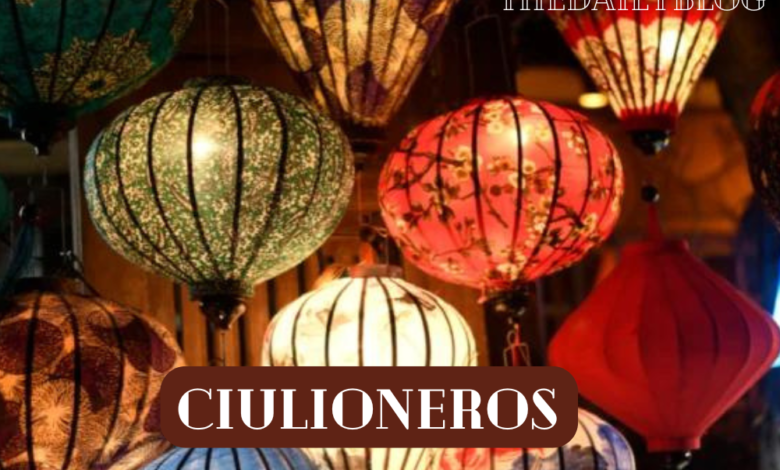Ciulioneros Exploring The Cultural and Historical Significance

The term “ciulioneros” might seem unfamiliar to many, but it holds great significance within certain cultural and historical contexts. In this article, we will explore what ciulioneros represents, its roots, and its influence on modern culture. Whether you’re a history enthusiast or a curious learner, understanding the significance of ciulionero will give you a glimpse into a fascinating piece of human history.
What Are Ciulioneros?
To begin, ciulioneros refers to a term deeply embedded in the traditions of certain regions or communities. While its exact meaning can vary depending on the location or cultural context, ciulionero is typically associated with a group of individuals engaged in specific historical or cultural practices. Understanding the etymology and origins of the term can shed light on its broader significance.
Historical Origins of Ciulioneros
The roots of ciulioneros trace back centuries, emerging from folklore and communal practices that were integral to the lives of people in rural societies. Historically, ciulionero were often seen as guardians or protectors of certain traditions, with many legends emphasizing their bravery, wisdom, and knowledge of the land. These groups often played a key role in the defense of their communities during times of conflict or in preserving essential cultural rituals.
Also Read: Who is Yashvika Kurella? A Rising Star in the Entertainment Industry
The Role of Ciulioneros in Culture and Tradition
Ciulioneros were more than just warriors or defenders; they also carried with them a wealth of cultural knowledge. Often seen as keepers of history and storytellers, ciulionero passed down important narratives from one generation to the next. These stories were essential in keeping traditions alive and helping future generations understand their ancestry and the importance of preserving their heritage.
In some regions, ciulionero were known for their connection to nature and the land, often being regarded as protectors of the environment. This relationship with nature fostered a deep respect for the earth, and many of the rituals and customs associated with ciulionero revolved around the changing of the seasons, agricultural practices, and the natural elements.
Modern Interpretation of Ciulioneros
Today, the role of ciulioneros has evolved. While their historical significance remains intact, modern interpretations often see ciulioneros as symbols of strength, resilience, and cultural pride. Festivals and celebrations that honor ciulioneros have become popular, especially in regions where this cultural group has deep roots.
These festivals typically feature traditional music, dance, and reenactments of historical events where ciulioneros played a pivotal role. The symbolism associated with ciulionero continues to inspire artists, writers, and creators, making it an enduring part of modern culture.
Why Understanding Ciulioneros Matters
Understanding the cultural and historical significance of ciulionero is not just about learning a term; it’s about recognizing the importance of preserving traditions that have shaped societies. Whether it’s through folklore, communal storytelling, or environmental stewardship, ciulionero offer valuable lessons that are relevant even in today’s fast-paced world.
The stories of ciulionero reflect the importance of community, loyalty, and respect for the past. By keeping these traditions alive, modern society can learn a great deal about resilience, adaptability, and the power of collective memory.
Impact of Ciulioneros on Modern Society
In today’s world, where many traditional customs are at risk of being forgotten, ciulioneros stand as a reminder of the importance of cultural preservation. Many communities have revitalized the practices associated with ciulioneros through events, education, and initiatives aimed at protecting historical sites.
Furthermore, as environmental concerns become more prevalent, the eco-centric practices of ciulionero offer insight into sustainable living and harmonious coexistence with nature. Many modern environmental movements draw inspiration from indigenous and historical practices similar to those of ciulionero, emphasizing the importance of respecting natural resources and living sustainably.
FAQs
What is the origin of the term ciulioneros?
The term ciulionero has its roots in folklore and historical practices, primarily within rural or indigenous communities. The exact origins vary depending on the region, but it generally refers to a group of individuals deeply connected to cultural and environmental preservation.
Are there any modern ciulioneros?
While the traditional role of ciulionero has evolved, many modern individuals and groups honor the legacy of ciulionero by participating in festivals, preserving historical sites, and advocating for environmental sustainability.
How are ciulioneros celebrated today?
In many regions, festivals and events celebrate the legacy of ciulionero through traditional music, dance, and reenactments of historical events. These celebrations help keep the cultural significance of ciulionero alive in modern society.
Why is it important to learn about ciulioneros?
Learning about ciulionero helps preserve cultural history and offers valuable lessons in community, resilience, and environmental stewardship. It also fosters an understanding of the interconnectedness between people and nature, which is increasingly relevant today.
Conclusion
The legacy of ciulioneros is an enduring reminder of the importance of preserving culture, traditions, and the environment. From their historical roles as protectors of the community to their modern-day symbolism in festivals and environmental movements, ciulionero continue to be an important part of both past and present societies. By understanding their significance, we can appreciate the richness of human history and the invaluable lessons it offers. Whether through storytelling, cultural preservation, or environmental stewardship, the spirit of ciulionero lives on, offering wisdom and inspiration for generations to come.




